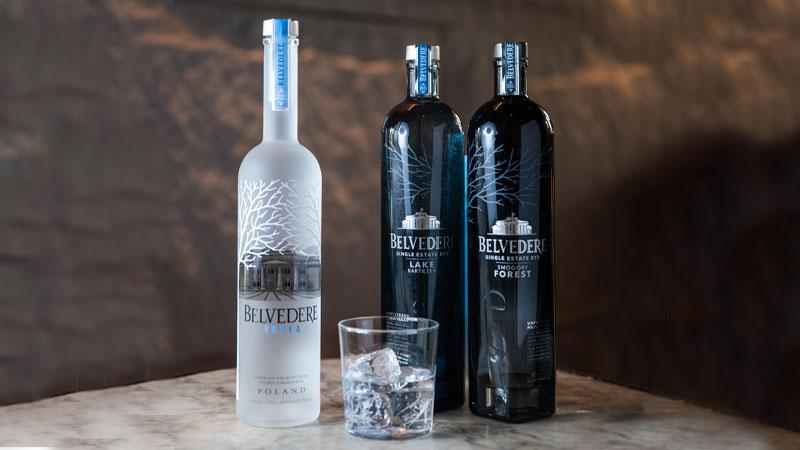Blog
Vodka ( Definition, Production Process, Flavored Vodka)

VODKA
DEFINITION
Vodka is a neutral spirit made from the fermentation and distillation grain mash than rectified. It has no flavour, aroma, colour etc.
History of Vodka
Vodka is a drink, which originated in Eastern Europe. The name stemming from the Russian word ‘voda’ meaning “water of life” or as the Poles would say ‘woda.’ The first documented production of vodka in Russia was the end of the 9th century, but the first known distillery at Khylnovsk was reported in the Vyatka Chronicle of 1174.
Poland lays claims to having distilled vodka even earlier in the 8th century., but as this was a distillation of wine it might be more appropriate to consider it a crude brandy. The first identifiable Polish vodkas appeared in the 11th century when they were called ‘Gorzalka’ originally used as medicine.
In the 14th century a British Ambassador to Moscow first described vodka as the Russian national drink. Early production methods were crude; vodka often contained impurities, so to mask these distillers flavoured with spice & herb. Mid 15th century saw the first appearance of pot distillation in Russia.
In the 18th century a professor Theodore Lowitz of St. Petersburg discovered a method of purifying alcohol using charcoal filtration. Felt and river sand had already been used for some time in Russia.
After the Russian Revolution, the Bolsheviks confiscated all private distilleries in Moscow. As a result, a number of Russian vodka-makers emigrated, taking their skills and recipes with them. One such exile revived his brand in Paris, using the French version of his family name – Smirnoff. After that they settled in USA in 1930 , set up the first vodka distillery in 1934. This was subsequently sold to a US drinks company. Vodka began in the 1940s to achieve its wide popularity in western world. Entrepreneur who eventually made a hit in the 1950s with vodka-based cocktail –the Moscow mule – vodka’s mix ability led to its huge and ever rising popularity.
PRODUCTION OF VODKA
Vodka can be manufactured from almost anything, which contains starch including potatoes, grain sugar cane, and grapes but generally produced by rye or corn. All these ingredients have been commercially used although grain is the source of most vodka produced in the world today.
- The manufacture-the grain is first pressure cooked and then grounded. For this, a very special type of pressure cooker is used. The mash is then cooled and mixed with water. Special types of enzymes are added to convert starch into sugar.
- Fermentation-Yeast is added and fermentation takes place as much as in whiskey making.
- DISTILLATION-Then mash goes into a continuous still for distillation where it is distilled to very high proof around 190 U.S proof which eliminates all possible flavoring & congeners from the spirit.
- RECTIFICATION-Continuous still generally have two columns, one for distillation and another for rectification. But in stills where the neutral spirit is produced, there is an additional column for purification. Generally, very high-quality vodkas are passed through a bed of vegetable charcoal. When vodka comes out from the tank of charcoal it is absolutely clear and free of all sorts of characters.
- BOTTLING-The purified neutral spirit is diluted with natural river water (not distilled water) to reduce its alcoholic strength to 40% v/v. Aging is not required as vodka can be bottled the same day it is made. Vodka certainly does not have the bold flavor but neither it is as tasteless.
BRAND NAMES
| Russian | American | From Other Country |
| Stolichnaya | Smirnoff | Absolute (Swedish) |
| Moskovskaya | Burnett’s | Wyborowa (Poland) |
| Beluga | Gilbeys | Suntury (Japan) |
| Gordons | Great wall (Chine) | |
| Ever clear- Grain Alcohol (190 US Proof)Strongest vodka produced in the world. | Finlandia (Finland) |
Flavored RUSSIAN VODKAS
- Zubrovka(Russia) and Zubrwka(Poland) –It is flavoured vodka produced not only in Russia or Poland but also from all the Slavic countries. The vodka is steeped with buffalo grass (Baisin) and each bottle contains a blade of buffalo grass in it. Regrettably, all these vodkas are not exported to USA as scientists have proved that the grass contains a chemical (coumarin), which causes liver cancer, but the vodka without grass is found in USA markets.
- Okhotnichya – Hunter’s vodka seasoned with meadow grass and heat honey. It is aromatic and spicy. The aristocrats of czarist Russia to celebrate a successful hunt call it hunter’s they used to drink this vodka.
- Pieprzowka – This is 70 proof vodka made in Russia by infusing red, white and black pepper in vodka
- Starka – It is 86 US proof vodka made in Russia, aged for 10 years in wine barrels. It has a hint of Brandy, Vanilla, Honey, Port and flavors of the leaves of several types of apple and pears.
- Blavod- This is BLACK COLOUR vodka produced by Mark Dorman of Hayman Distillery London. It is flavored with an herb called CACHTEAU, found in East Africa, West Africa, and South Africa. It is triple pot still distilled and bottled at 80 US proof.
- Limohnaya – lemon flavored
- Chesnochnaya –Garlic
- Kurrant –Black current
- Winniak –Aged for 5 yrs in wine barrels
- Citron– Citrus fruits
SERVICE OF VODKA
The vodkas are perfectly fit for use in cocktails like Bloody Mary, Screw Driver, Vodka Martini, Bullshot, Black and White Russian, etc. Russian vodkas are enjoyed either on the rocks or straight preferably the latter. The Polish vodka is also enjoyed in the same way as their Russian counterparts.